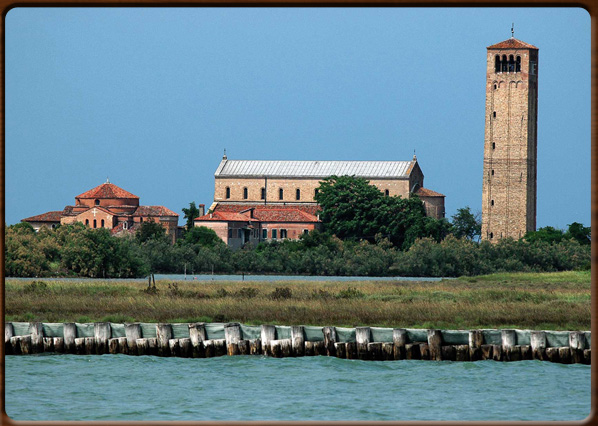
Map of Torcello in the seventh century.

The island of Torcello in the north of island of Burano.

S. Maria Assunta and S. Fosca seen from the lagoon.

Dionysus is reborn. Greek marble tile in the twelfth century, Museo dell'Estuario.




No video
Many years before Venice began to rise as the most important commercial power in the Mediterranean, the island of Torcello (in the north section of the lagoon) was already famed as a centre of civilisation.
The inhabitants of the mainland began to move to the lagoon in the 5th Century onwards, fleeing from the Lombard and Hun invasions. At one point the population of Torcello totalled 20,000. Very few traces remain of this migration: the canals were filled in, malaria decimated the population and the centre of power shifted to Venice. There are, however, the ruins of some old settlements and the magnificent Basilica of S. Maria Assunta. Then there is the Church of Santa Fosca with its square plan and the palaces of the State Archive and Council, now the Museum of the Estuaries.
Only a few gardeners and fishermen still live on Torcello today.
400 - 1000 - ISOLE - rev. 0.1.5